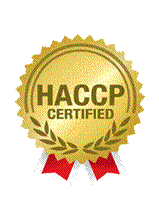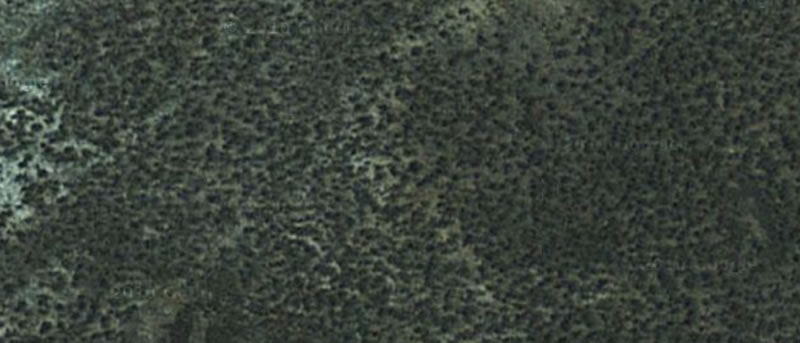

WA POLLEN POWER Known as the Food of the Gods, pollen has been used for centuries as a food source and to increase energy and stamina. "Pollen Power bee pollen" is certified and extracted from the highest quality Eucalyptus species in Western Australia. |
|||||||||||||||||||||||||||||||||||||||||||||||||||||||||||||||||||||||||||||||

|
|||||||||||||||||||||||||||||||||||||||||||||||||||||||||||||||||||||||||||||||
| "I have tried many bee pollens from all parts of the planet. Your Pollen Power Bee pollen is in my opinion the best on the planet. Thank you, Namaste" , Brendan Georgeson Noosa, Queensland |
|||||||||||||||||||||||||||||||||||||||||||||||||||||||||||||||||||||||||||||||
| "Pollen Power" is one of the best picked pollen in Australia, certified and picked by one of the leading bee keepers in the country. Western Australia's eucalyptus pollen is renowned for being the tastiest in the world, as well as being of high quality. The pollen is harvested free of chemicals and from pristine forests and conservation reserves.   Food Safety: A safe quality food standard: A Hazard Analysis Critical Control Point (HACCP) guides the Western Australian pollen industry to produce unique quality pollen to an internationally recognised standard. Our bee keepers, who produce "Pollen Power" produce exceptional bee pollen. Their personnel were closely involved in the development of the Hazard Analysis Critical Control Point (HACCP) system which guides the bee pollen industry in Western Australia. Below is an aerial image from the pristine lands of South West Western Australia where my colony is located. Cannot see much can you! This is the reason why Western Australian bee pollen is the best in the world. We live in an uncontaminated and unpopulated forest. We have no pollution, no pesticides or chemicals and we live free from radiation which makes our bee pollen the greatest and tastiest in the world.  |
|||||||||||||||||||||||||||||||||||||||||||||||||||||||||||||||||||||||||||||||
| What you need to know! Honey bee Hailey states that.. "Our pollen is only as healthy as us bees" There is a lot to be said for finding the right bee pollen supplement. Bee pollen is collected in a variety of ways and likewise, is distributed in a variety of ways. It is also a sensitive issue as to where geographically the bee pollen was collected. Not all bee pollen supplements are created equal. Choosing the wrong supplement can mean the difference between vibrant benefits and no benefits at all. Consumers need to be made aware that although consuming bee pollen may improve ones energy, many of the products currently available are self policed meaning there is no regulation to say that you are actually buying natural bee pollen. If you really want the true benefits that bee pollen can offer, you need to know the truth about bee pollen and the dietary supplement industry as a whole. Beware of imported bee pollen: Many Australian distributors of bee pollen have switched from selling domestic Australian bee pollen to inexpensive imported pollen from China and Spain. This type of pollen is often heat processed and dehydrated to facilitate easy storage and increased shelf life. Unfortunately, heat destroys the bioactivity of nutrients and enzymes which are an important component of bee pollen. Granules of fresh bee pollen are semi-moist. Once pollen has been collected it is most nutritive when fresh, after 12 months its food value declines. Even though some of these companies are registered as Australian companies, it does not necessarily mean that the bee pollen they sell is sourced from local bee keepers. Bee pollen, in Australia of the highest quality, is almost always found to come from Western Australia. Western Australia is fairly unpopulated and that eliminates a great deal of the pollution caused by human beings naturally. It is also, partly due to being so scarcely populated, that it is not highly industrialized and therefore, makes a lovely breeding ground for bees to create bee pollen naturally without the side effects of pollution on their pollen. |
|||||||||||||||||||||||||||||||||||||||||||||||||||||||||||||||||||||||||||||||
Analysts and consulting technical chemists Registered under the WA health act NATA accreditation No: 14423 SUBMISSION INTO THE FUTURE DEVELOPMENT OF THE AUSTRALIAN HONEY BEE INDUSTRY. |
|||||||||||||||||||||||||||||||||||||||||||||||||||||||||||||||||||||||||||||||
Bee Pollen Nutrition |
|||||||||||||||||||||||||||||||||||||||||||||||||||||||||||||||||||||||||||||||
|
|||||||||||||||||||||||||||||||||||||||||||||||||||||||||||||||||||||||||||||||
How to take bee pollen.  Your digestive system may not be accustomed to such intensely rich food. If you are a beginner, introduce bee pollen into your diet slowly, a granule or two at a time. Don't cook with the granules or add powdered granules to anything that requires heat. Heat destroys the live enzymes and reduces the nutrient value. Otherwise, the sky's the limit. Your digestive system may not be accustomed to such intensely rich food. If you are a beginner, introduce bee pollen into your diet slowly, a granule or two at a time. Don't cook with the granules or add powdered granules to anything that requires heat. Heat destroys the live enzymes and reduces the nutrient value. Otherwise, the sky's the limit. You can stir powdered granules into vegetable juices, or even into water sweetened with raw honey. Whirl the powder into salad dressings. Sprinkle whole or powdered granules on toast topped with peanut butter. Before taking a full dose of pollen it is very important to test for a possible extreme allergic reaction by ingesting just one pellet. Then gradually build up over a week or so to the correct serving. The optimal serving of pollen varies with individual needs. You should gradually increase your serving to one tablespoon. It will give about five grams of protein which is a good addition if you already have some proteins in your meal, such as a legume dish. How much to take : Adults: One teaspoon (5 grams) taken twice daily. Endurance runners and weight lifters can take up to 4 teaspoons a day. If you have allergies take half the recommended serving of pollen in the morning and half again in the afternoon. Children: Children can start with 3 to 4 granules in the morning. This can be increased over time dependent on the child's needs. For how long should pollen be taken? Pollen should be taken for a minimum of one month. Please note that the body's response to bee products varies from person to person, including the length of time for certain results to occur. However, the overall results in all our customers has been positive. That is why, once a person has enjoyed the benefits of these products, they do not want to give it up or return to their old vitamins. Allergy Test: If you have never taken pollen before and just want to be sure, take a couple of granules and place them under your tongue and allow them to dissolve. If no adverse reaction is noticed, next morning take a few granules. Over the period of a couple of weeks you can build yourself up to the full strength serving. Side effects Food Warning: Pollen Power contains bee pollen which can cause severe allergic reactions. Although there are many benefits of bee pollen, those who are allergic to bees should avoid bee pollen (and other bee products). Disclaimer: The above information should not be seen as a claim for any remedial properties, it is entirely based on experience of bee pollen users, and therefore it is advisable to consult your physician or homeopath regarding treatment. None of the information on this website is intended to replace sound medical advice, nor is it recommended for people to stop their prescribed medications. |
|||||||||||||||||||||||||||||||||||||||||||||||||||||||||||||||||||||||||||||||
| The Sublingual Delivery System | |||||||||||||||||||||||||||||||||||||||||||||||||||||||||||||||||||||||||||||||
Bee pollen is best taken sublingual - 'Under the tongue', where the pollen absorbs into the blood stream through tissues under the tongue. In contrast, bee pollen capsules absorbed in the intestines are subject to "first pass metabolism" in the liver before entering the general circulation, so you lose a lot of the pollen content.
Furthermore, after absorption from the gastrointestinal tract, such capsules must pass to the liver, where they may be extensively altered; this is known as the "first pass metabolism" effect of capsule metabolism. Due to the digestive activity of the stomach and intestines and the solubility of the GI tract, the oral route is unsuitable for certain substances, such as bee pollen capsules. |
|||||||||||||||||||||||||||||||||||||||||||||||||||||||||||||||||||||||||||||||
 (Value $0.00) |
|
| CALL 1300 536 663 | |
| PRODUCTS | |
|
|
|
|
|
|
| BEE INFORMATION | |
|
|
|
|
|
|
|
|
 Sublingual administration of bee pollen has certain advantages over capsule administration. Being more direct, it is often faster, and it ensures that the bee pollen will risk degradation only by salivary enzymes before entering the bloodstream, whereas orally administered capsules must survive passage through the hostile environment of the gastrointestinal tract, which risks degrading them, either by stomach acid or bile, or by the many enzymes therein, such as monoamine oxidase (MAO).
Sublingual administration of bee pollen has certain advantages over capsule administration. Being more direct, it is often faster, and it ensures that the bee pollen will risk degradation only by salivary enzymes before entering the bloodstream, whereas orally administered capsules must survive passage through the hostile environment of the gastrointestinal tract, which risks degrading them, either by stomach acid or bile, or by the many enzymes therein, such as monoamine oxidase (MAO).